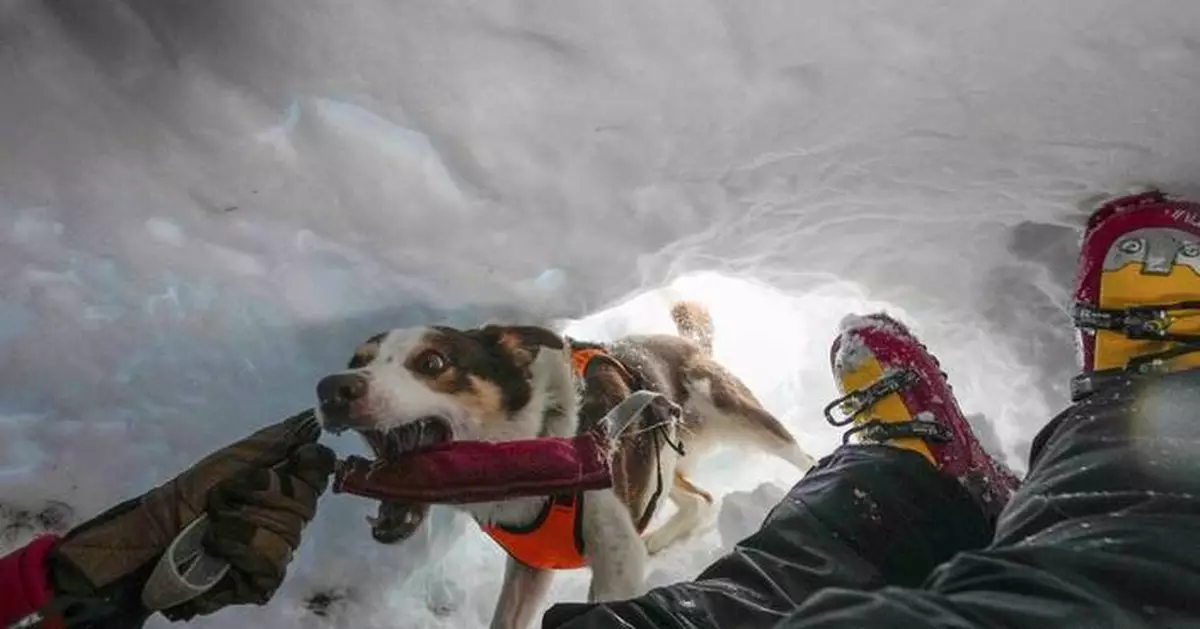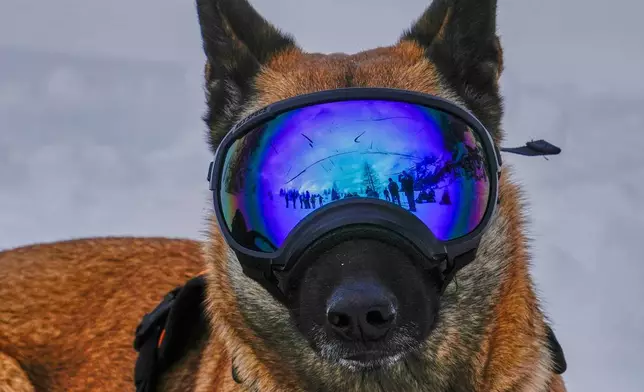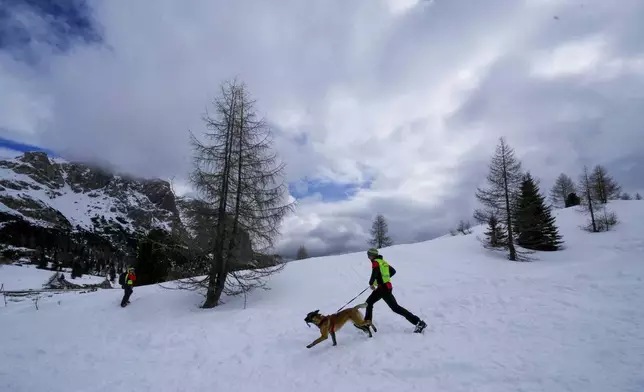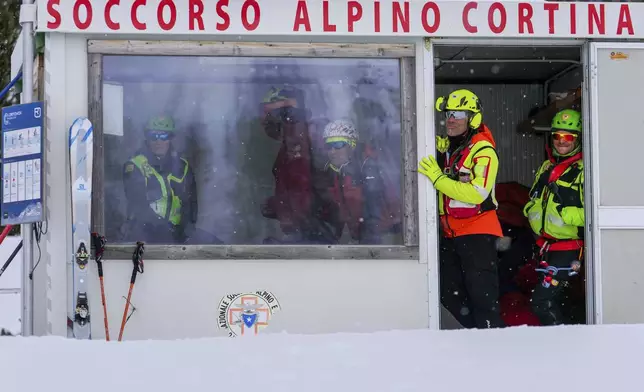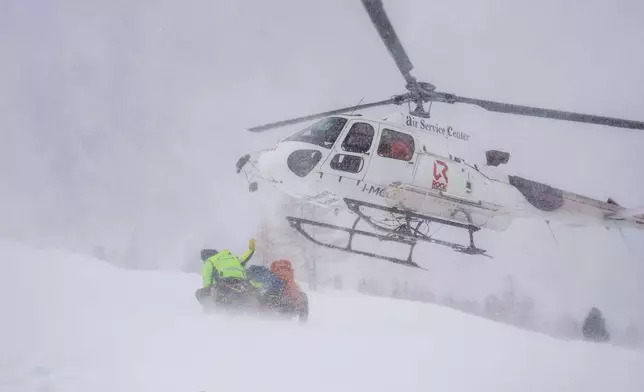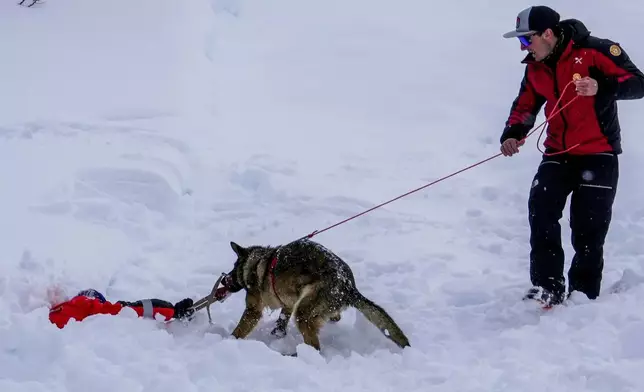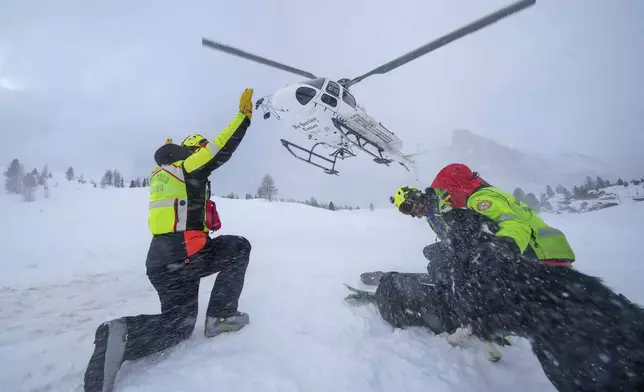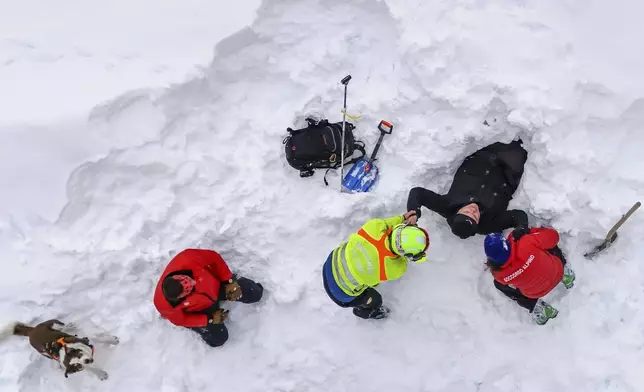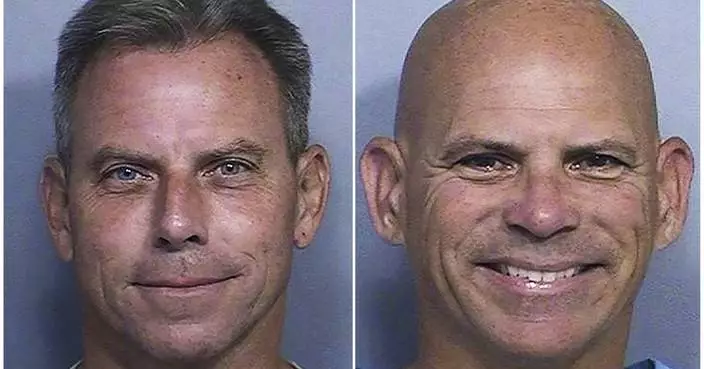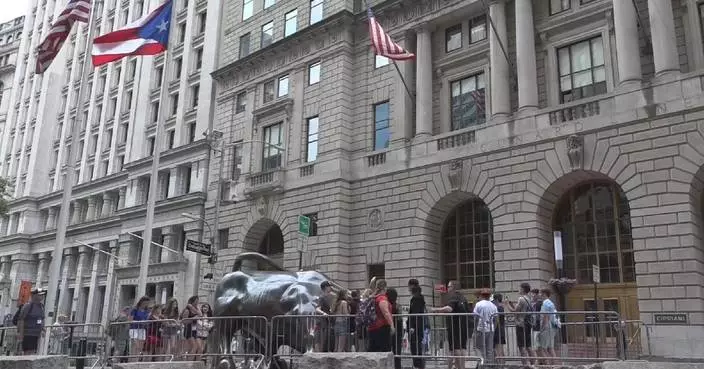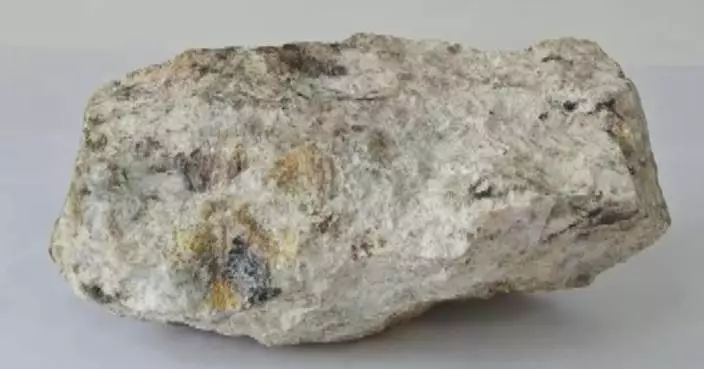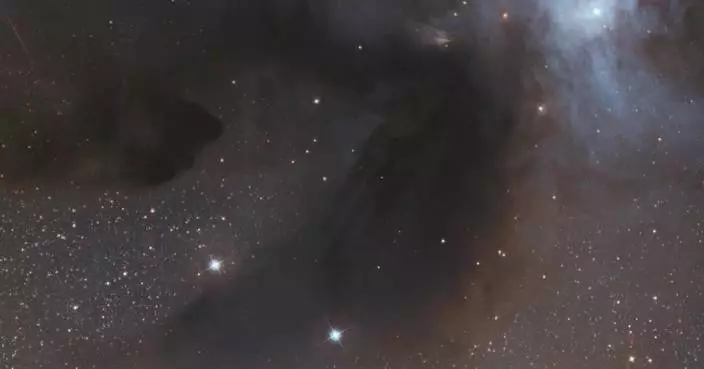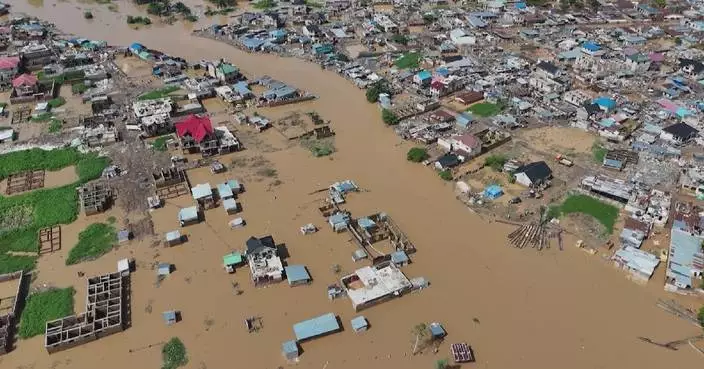CORTINA D'AMPEZZO, Italy (AP) — Zen, a 5-year-old border collie, circled friskily around a mound of snow as he picked up a scent, his quick movements signaling to his handler that someone was buried deep below.
Zen has been a rescue dog for three years, and on this day, he was setting an example for 20 others dogs being certified for avalanche rescue in the heart of the Italian Dolomites, where the breathtaking jagged peaks have long enchanted writers, painters and outdoor enthusiasts alike.
The role of dogs in Italian alpine rescues is becoming more important as the number of people caught by avalanches increases — up by 50% over the past 25 years.
Climate change has made heavy, wet snow more common in midelevations between 1,500-2,500 meters (5,000-8,000 feet) where most excursionists venture, which makes avalanche survival less likely by compressing air pockets that would allow a trapped alpine or off-piste skier to breathe.
A trained avalanche rescue dog's nose can locate someone buried deep in the snow more accurately than any transponder, making their role fundamental in reaching victims "in the shortest possible time,'' said Adriano Favre, who ran the canine training camp in the mountains above Cortina D'Ampezzo, a chic ski resort and a venue of the 2026 Winter Olympic Games.
After picking up the scent, Zen energetically emerged with a sign of life — a rope tug toy — from the snow den masquerading, for the purposes of the training exercise, as an avalanche. Shortly after, his handler digs a volunteer victim out of the snow, and showers Zen with praise and affection.
“All of our dogs need to have an intense relationship with the handler. If not, we can’t read what he is trying to tell us,’’ said Zen’s handler, Paolo Sbisa, who has raised him from puppyhood. “Once the relationship is built, they will do anything to make us happy.’’
Nine days earlier, on a nearby pass just 5 kilometers (3 miles) away as the crow flies, Zen’s mission was deadly serious.
Three backcountry skiers were buried by an avalanche on Giau Pass at about 2,300 meters (7,500 feet) — normally a route for beginners amid scenic rugged rockfaces near a mountain road that turned deadly the day after a heavy snowfall.
Zen and his handler were on the first helicopter leaving base 10 minutes away. By the time they arrived, witnesses had pulled a 51-year-old man from the snow. Rescuers located the second victim with a transponder, a 38-year-old man buried 2 meters (6 feet) deep.
Zen’s nose was key to locating the third skier, a 40-year-old woman buried in 3 to 4 meters (9 to 12 feet) of snow — deeper than the usual, according to Sbisa, making the role of a rescue dog critical in determining where to dig.
Despite their efforts, both she and the second victim died — revealing a disheartening truth: If you need a dog to find you, it’s probably too late. For this reason, Sbisa and other rescuers say it is critical for backcountry excursionists to have and know how to use transponders, foldable probes and shovels, as the best chance of survival is self-rescue by companions or witnesses. Dogs, more often than not, locate bodies.
“If something goes wrong though, the only weapon Alpine rescuers have to search is dogs," Sbisa said. "We have no other chance.″
Avalanches involving people who need rescue in Italy have doubled since the turn of the century from a rolling average of 30 a year to 60, according to the AINEVA snow and avalanche monitoring service. During the same period, the number of excursionists struck on average also increased significantly, from 65 a year to 110 a year, based on rolling averages.
For those who are buried, survival comes down to time. The best chance comes when a person freed in the first 10 to 15 minutes, said Igor Chiambretti, the technical chief of Italy’s AINEVA snow and avalanche association. If not found within 35 minutes, studies show 70% of victims die of asphyxiation.
Rescue dogs in Italy are always on the first helicopter leaving base. But it typically takes 15 to 20 minutes to arrive at any avalanche scene. Bad weather prolongs that window.
Putting a pair of avalanche dogs at ski areas instead would reduce that arrival time to five minutes, something Chiambretti said is being considered in Italy, where 80 avalanche dogs are active.
Adding to the risk are snow dumps — heavy wet snow with the water content between 3% and 8%. They were once considered spring snow, but now come as early as December, thanks to more moisture in the air and warmer temperatures, Chiambretti said.
They are especially common in the heavily trafficked middle altitudes and reduce the chances of survival by compressing air pockets. With more of this kind of snow, the number of people to survive a complete burial will be fewer and fewer, Chiambretti said.
Snow dumps have grown especially more common in Italy, on the southern edge of the Alps, facing the Mediterranean Sea.
“The Mediterranean basin is considered a so-called hot spot, that is an area of the planet where climate change, particularly warming, is more than the global average,’’ said Gianni Marigo, an AINEVA climatologist. The Italian Alps, in turn, “are a hot spot within a hot spot."
The big picture of climate change also means less overall snow for avalanches as glaciers globally shrink, especially in the Alps. Snow depth levels in the southwestern Alps has decreased nearly 5% a decade since the 1980s, according to a 2024 study.
“With a wetter and warmer snow climate, consequences of burial will be more severe,'' while blunt trauma will become more likely as snow cover becomes thinner, according a 2021 study published in Frontiers in Physiology. "Asphyxia and trauma, as causes of avalanche death, may increase."
By the time a rescue dog located Roberto Ferrino buried beneath an avalanche in the Alps of northwestern Piedmonte, the lone backcountry skier had been buried for 4 hours and 40 minutes — well beyond the average survival time.
To this day, seven years after his accident, neither Ferrino nor his wife know how he made it — except that an air pocket formed around him that allowed him to breath. His body temperature dropped to 26 degrees Celsius (78.8 Fahrenheit) and heart rate to 30 beats per minute.
Still, Ferrino doesn't regret braving the mountains alone that day despite warnings of a “considerable” avalanche risk. He says his error was in choosing a steep slope and not paying attention to the winds.
"If I had done the normal route, nothing would have happened,'' he said.
Barry reported from Rome.
The Associated Press’ climate and environmental coverage receives financial support from multiple private foundations. AP is solely responsible for all content. Find AP’s standards for working with philanthropies, a list of supporters and funded coverage areas at AP.org.

Ira, a dog with the Italian National Alpine and Speleological Rescue Corps, attends a training in Col Gallina in the Italian Alps near Cortina D'Ampezzo, northern Italy, Tuesday, March 25, 2025. (AP Photo/Luca Bruno)

Avalanche dog Brina attends a training with the Italian National Alpine and Speleological Rescue Corps in Col Gallina, near Cortina D'Ampezzo, northern Italy, Tuesday, March 25, 2025. (AP Photo/Luca Bruno)

A rescue team waits at their base during a training with the Italian National Alpine and Speleological Rescue Corps in Col Gallina, near Cortina D'Ampezzo, northern Italy, Tuesday, March 25, 2025. (AP Photo/Luca Bruno)

Italian National Alpine and Speleological Rescue Corps, attend a training in Col Gallina, near Cortina D'Ampezzo, northern Italy, Tuesday, March 25, 2025. (AP Photo/Luca Bruno)

Avalanche dog Phoenix attends a training with the Italian National Alpine and Speleological Rescue Corps in Col Gallina, near Cortina D'Ampezzo, northern Italy, Tuesday, March 25, 2025. (AP Photo/Luca Bruno)

Ira, a dog with the Italian National Alpine and Speleological Rescue Corps, attends a training in Col Gallina in the Italian Alps near Cortina D'Ampezzo, northern Italy, Tuesday, March 25, 2025. (AP Photo/Luca Bruno)
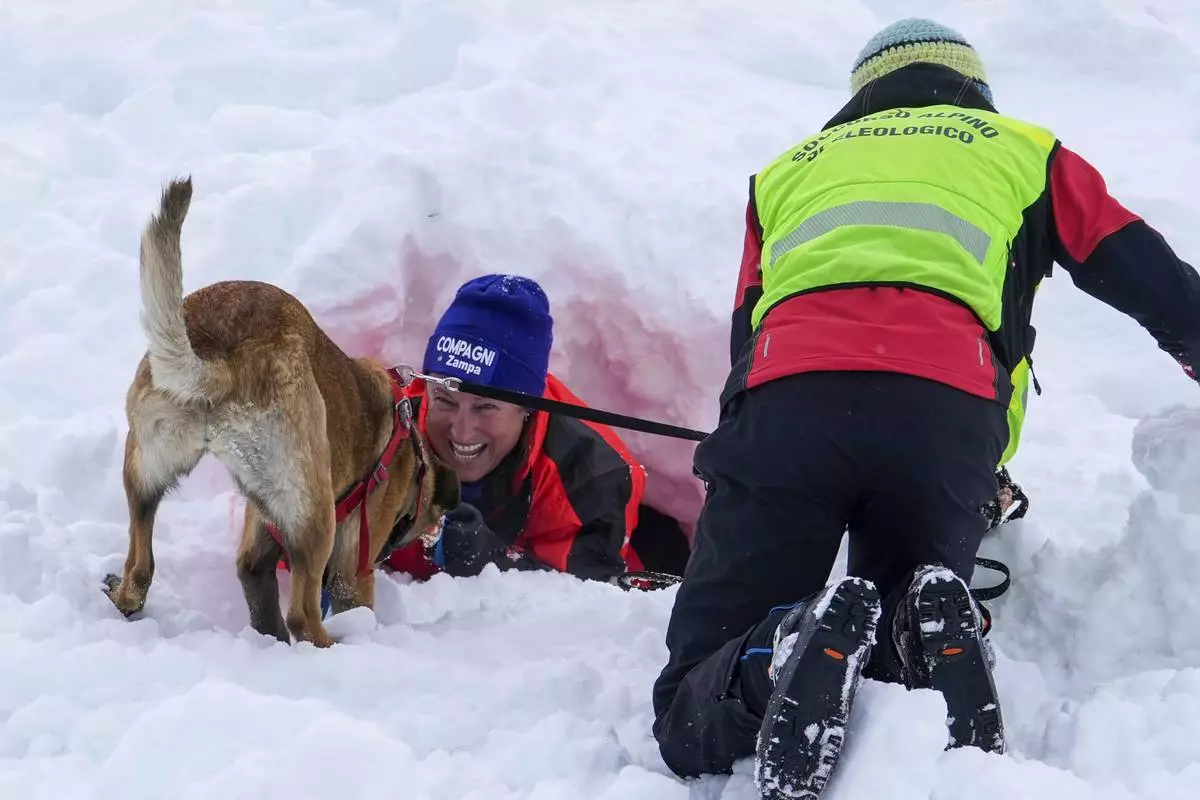
Avalanche dog Brina is praised by her trainer Silvia Anselmetto during a training session with the Italian National Alpine and Speleological Rescue Corps in Col Gallina, near Cortina D'Ampezzo, northern Italy, Tuesday, March 25, 2025. (AP Photo/Luca Bruno)

Italian National Alpine and Speleological Rescue Corps, attend a training in Col Gallina, near Cortina D'Ampezzo, northern Italy, Tuesday, March 25, 2025. (AP Photo/Luca Bruno)

A man is helped out from under the snow during a training of the Italian National Alpine and Speleological Rescue Corps in Col Gallina, near Cortina D'Ampezzo, northern Italy, Tuesday, March 25, 2025. (AP Photo/Luca Bruno)
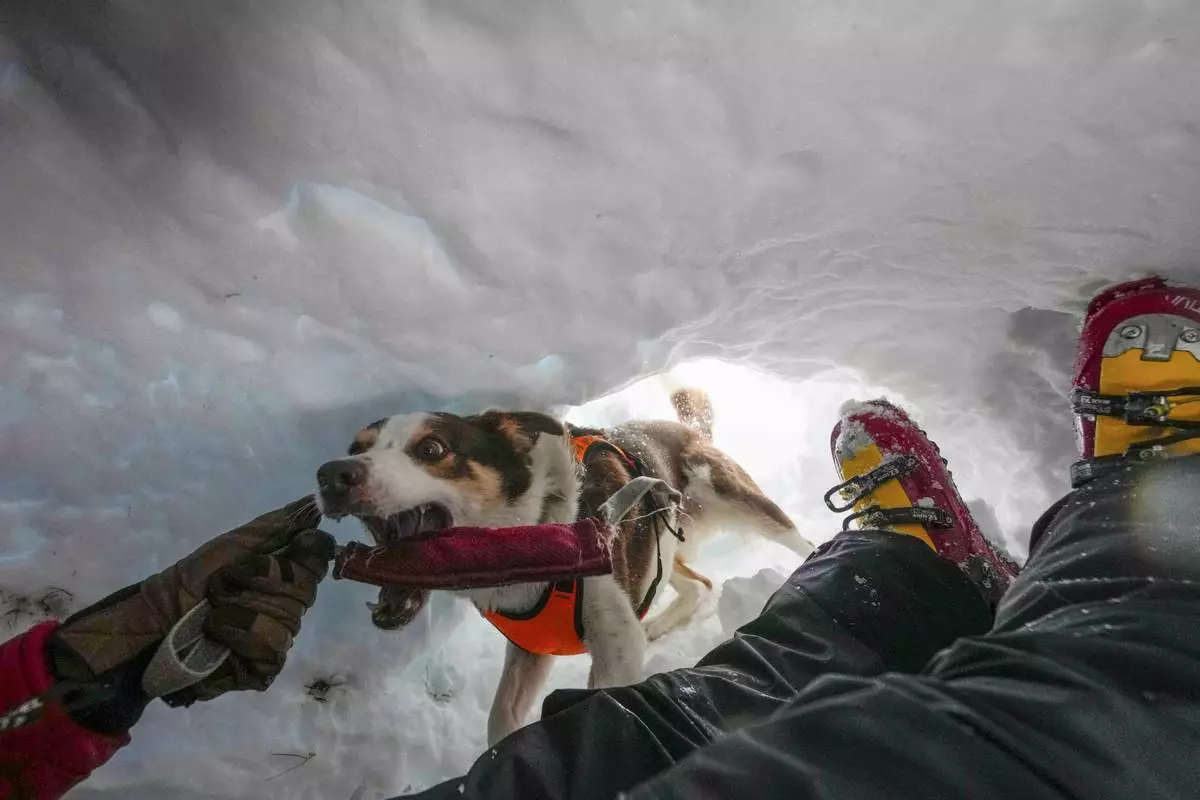
Zen, an avalanche Border Collie, attends a training with the Italian National Alpine and Speleological Rescue Corps in Col Gallina, near Cortina D'Ampezzo, northern Italy, Tuesday, March 25, 2025. (AP Photo/Luca Bruno)


